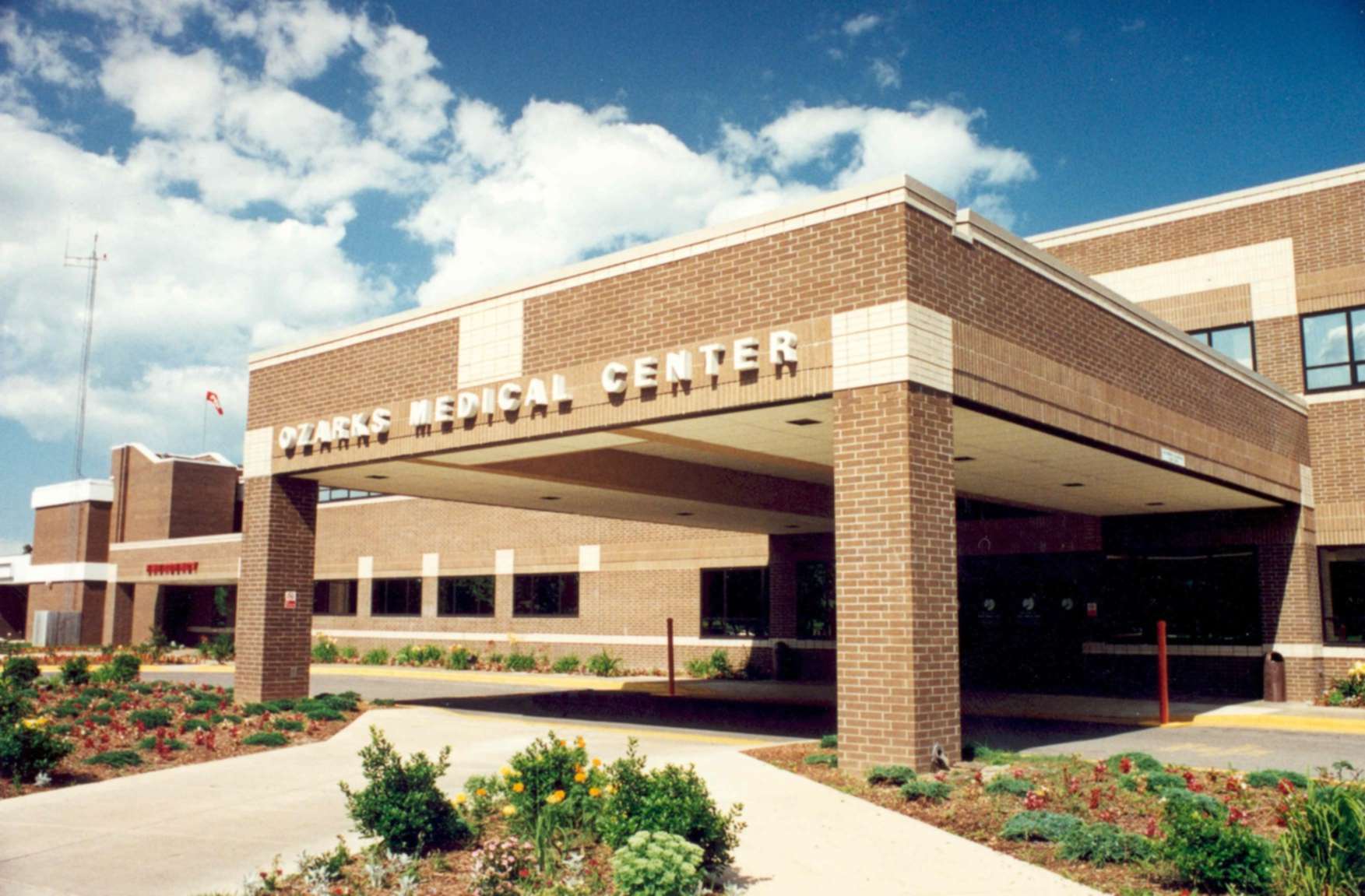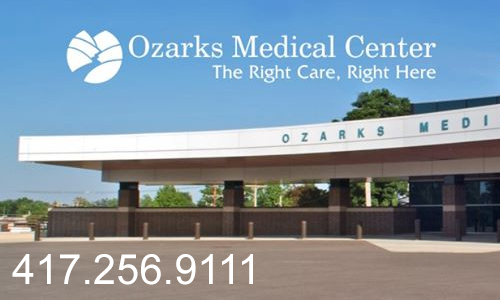Ozarks Medical Center

OMC today is a far cry from the original 42-bed facility serving 40,000 people with 60 employees. With 114-beds, OMC serves an 11-county area, employees 1,200 people and utilizes the services of more than 100 physicians, including a strong core of primary care physicians and numerous specialists.

Ozarks Medical Center History:
View OMC’s Original List of Donors
When West Plains Memorial opened in 1959, it was the result of almost a decade of work, five years of campaigning and the efforts of thousands of people.
“For many years it has been the dream of some of the progressive people of this area to have a modern, well-equipped hospital in West Plains,” said original board member Catherine Castner in 1955. “However, to many persons, it was only a dream, thinking that only a miracle would make it come true.”
The miracle to make the hospital come true was the hard work of determined local residents who through their bake sales, pie suppers and donations of their hard-earned paychecks made the dream of the hospital a reality.
Talk of a hospital began in 1951 when a Howell County Steering Committee was organized to research the possibility of a hospital. But, the steering committee was met with defeat. In 1951 and again in 1952, voters turned down a proposition to issue bonds for the purpose of a hospital.
But the vote did not discourage those who were determined to see a hospital in Howell County. Defeat simply meant more meetings, speeches, letters and campaigning.
On June 16, 1954, local businessman Lawrence E. Champieux called a public meeting to once again discuss the idea of a local hospital. A five-member hospital steering committee was appointed including Champieux, Hugh K. Thompson, George Roehrman, Dr. M.D. Amyx and Mrs. Dean W. Davis.
Adding to the planning group was the original Board of Trustees, who served from 1955 to 1960. This group included Thompson, president; Harry Boyer, vice president; Mrs. Davis, secretary; Pearl Butler, treasurer; Catherine Castner; Howard Fuller; J.E. Hard; Williard Hunter; O.H. Sears; Glen Roe; John Stein; J. Robert Barton; and H.T. Harlin. Honorary members were Lawrence Champieux, Clyde Williams and Charles Wood.
The new directors set about finding the funding that would make the hospital dream a reality. The most logical option was matching federal funds available under the Hill-Burton Act. The government, however, required applicants for the funds to show they were serious about building by putting up a $10,000 deposit.
The determined board was serious enough to dig into their own pockets and contribute $100 each. They then turned to area merchants, and found 90 who would also give $100. To put that in perspective, in 1959, a gallon of gas cost 25 cents, a loaf of bread 20 cents and a movie ticket $1.
The first $10,000 had been raised, but there was still a long way to go. A 42-bed equipped hospital would cost more than $700,000. The community would need to raise $350,000.
In 1955, Campaign Chairman Charles Wood asked the people to get behind the project.
“As far as this community is concerned, we have increased employment, converted pastures into homes and begun improvements to the school system,” he is quoted as saying. “But the one thing we have not done is provide hospital facilities to meet our needs. A hospital is the one thing we must have.”
Support from the community began to come in. Clyde Williams, a retired shoe merchant, pledged to give up to 10 acres of land for the hospital site on a piece of desirable property located just off Highway 63. One contributor funded a private patient room; three smaller rooms off the central corridor were pledged by another. Area churches held “hospital Sundays.” More than 1,200 area residents pledged to give at least $120 to the project, or $10 each month for a year.
In 1957 they broke ground and in 1959, 56 months after that first public meeting, the community saw the result of their efforts as West Plains Memorial Hospital opened its 42-beds to serve the 40,000 residents of south-central Missouri. The hospital opened in March 1959 and on April 30 of that year, more than 3,000 people attended an open house and ribbon cutting to celebrate the opening.
Looking back over the beginning of the hospital and the campaign to build it, Charles Hall, the hospital’s first administrator, said this in its first annual report “The conception of the idea, the development and the growth of the project is a rewarding experience. Such good things seem to be generated in the minds of people with faith and purpose. Faith of this kind is contagious.”
– Growing through the years –
Throughout its half-century of operation OMC has grown from a 42-bed hospital to a 114-bed complete health care system, which programs include heart care, cancer treatment, behavioral health care and rehabilitation services.
As the community grew, so did the hospital. In 1970, 24 beds, an intensive care unit, treatment room and family room were added to the original building. A second expansion was completed in 1974 that fulfilled the need for cafeteria space, office space and a waiting area. A third expansion project was completed in 1978. This time adding to the hospital 38 beds to the hospital, a new laboratory, X-ray department, physical therapy department, surgical suite, respiratory care and emergency room services.
In the 1980s the hospital acquired Heart of the Ozarks Medical Equipment (H.O.M.E.) as a for-profit subsidiary, built the Doctor’s Pavillion and opened a stress unit.
Recognizing that the hospital was serving much more than the West Plains area, in 1985 the board of trustees changed the hospital’s name to Ozarks Medical Center positioning the organization to become a regional medical referral center.
In 1989, OMC fulfilled another large need in the community by opening the Heart Care Center, including a cardiac diagnostic lab and cardiac catheterization lab. According to the then administration, the catheterization lab was opened to treat an estimated 500 patients each year who previously drove several hours to receive cardiac diagnostic procedures.
In the 1990s, OMC underwent major growth, reaching out to outlying areas and expanding services. Several area clinics became part of the OMC system, including facilities in Winona, West Plains, Thayer, Gainesville and Salem, Ark. In addition, OMC now has clinics in Mountain Grove, Mountain View, Alton and Mammoth Spring, Ark. Also in the 1990s, the OMC Neurosciences Center opened, Riverways Hospice services began and OMC received accreditation from the Joint Commission on Accreditation of Healthcare Organizations.
The external appearance of the hospital changed drastically in 1993 when a 47,000-square-foot expansion/renovation project was completed, providing new space for the medical/surgical floor, ICU, medical records, admissions, emergency department, mammography suite, gift shop and waiting room.
In 1997, OMC was awarded a state contract to provide mental health services for a seven-county region and OMC Behavioral Healthcare opened in the former West Vue Nursing Home.
The Shaw Medical Building opened in October of 1998 as home to the OMC Cancer Treatment Center, Rehabilitation Services and Imaging. It was named after Arch W. Shaw, a business leader, publisher and advisor to presidents, whose descendants have been instrumental in the progress of this area for more than a half a century. This includes supporting the development and growth of OMC, serving on its board of directors and contributing to the expansion of quality medical care. The two-story Shaw Medical Building encompasses approximately 30,000 square feet and was constructed at a cost of more than $7 million.
The next big expansion for OMC was in 2001 when the OMC Surgical Services facility opened. The facility houses more than $2 million worth of state-of-the-art surgical equipment.
In 2005, a major milestone was reached when open-heart surgeries began at OMC. Today, OMC Heart Care Services sees approximately 1,200 patients each month, including Cardiac Rehabilitation patients.
Did you know?
- In 1959, the original 42-bed hospital facility was built for a total of $700,000. In comparison, a gallon of gas cost 25 cents.
- Before OMC was built, area churches held “hospital Sundays.” More than 1,200 area residents pledged to give at least $120 to the project, or $10 each month for a year?

